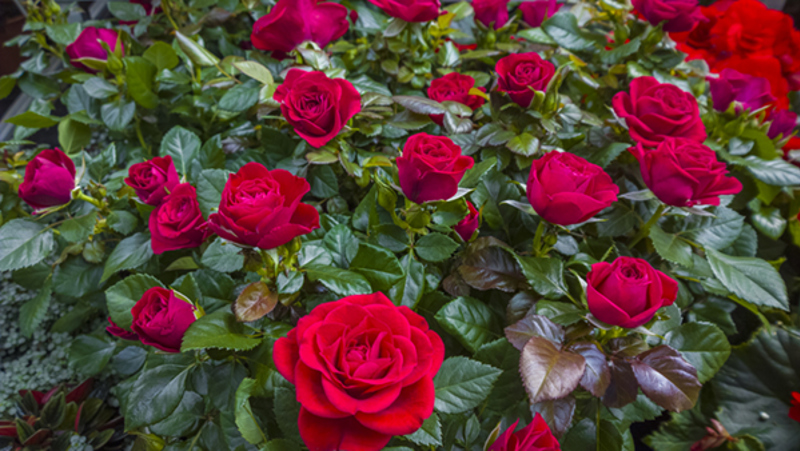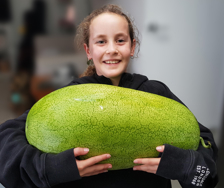Yates Account
Join now
Create a Yates account today!
Sign up to join the Yates Garden Club for monthly e-mails packed with seasonal inspiration, tips for success & exclusive promotions.
Plus if you’re a Garden Club member you can take part in the Yates Growing Community - a blog to share successes, get advice & win prizes in fun challenges along the way!

Forgot password
Enter the email address associated with your account, and we'll email you a new password.

Our roses have put on a fabulous flurry of new growth and beautiful blooms. Here's how to get your roses looking gorgeous for peak flower season in November.
Well fed roses will reward you with lots of growth and flowers. Whether you have a large rose garden or have a few potted roses, feeding them is easy. Yates® Thrive® Roses & Flowers Granular Plant Food is specifically designed to boost flower growth for hungry roses. For in-ground roses, spread the granules around the root zone and water in well. Yates® Thrive® Roses & Flowers Granular Plant Food is also specially formulated for use in pots. Alternatively for potted roses, you can apply Yates® Thrive® Roses & Flowers Liquid Plant Food each week from spring through to autumn. Yates® Thrive® rose foods contain a tailored combination of nutrients to encourage healthy green leaf growth and lots of beautiful blooms.
Also grab the opportunity to refresh or apply mulch around the base of rose bushes. Mulching has several benefits:
-
It helps reduce the amount of water splashing up from the soil onto the leaves, which decreases the risk of leaf diseases.
-
Mulch helps to keep the soil moist and protect the delicate top soil from baking sun.
-
Organic mulches, such as bark chips and Lucerne straw, will break down over time and add valuable organic matter to the soil.
- To keep your rose looking neat and tidy, regularly remove spent flowers. This will also encourage more flowers to develop.
- Prune off any shoots that develop below the graft (the bump on the lower stem). This vigorous growth will eventually take over the rest of the plant if it's not kept in check.
- Apply a layer of mulch, such as bark chips or straw, around the root zone. Keep the mulch a few centimetres away from the stem, to allow for good air flow around the base.

Caterpillars Love Roses!
The fabulous rose blooms that you’ve been waiting patiently for are also being eagerly anticipated by some very hungry caterpillars. Often well camouflaged, caterpillars can cause significant damage. They can chew through and into rose buds and petals, as well as eating leaves.
Control these destructive little pests by spraying roses thoroughly every 2 weeks, including the undersides of foliage where caterpillars often hide, with Yates® Rose Gun ready-to-use spray.
Other common insect pests of roses such as aphids, thrips, whitefly and two-spotted mites will also be controlled with Yates® Rose Gun, together with dreaded rose black spot disease.

Aphids love roses in spring! These small sap sucking insects, which can be green, black, yellow or brown, feast on the sugary sap that is flowing through the tender new rose growth. They'll often be seen clustering in large numbers on flower buds and along stems and also underneath leaves. Aphids deplete roses of valuable nutrients and sugars, can cause leaves to twist and distort, and can also transmit damaging viruses. So it's important to control aphids as soon as they're noticed.
Thrips are tiny, slender insects, 1-2 mm long, that suck the sap from rose leaves and flowers. They can cause brown blemishes on petals and leaves to appear silvery or distorted.

Rose Diseases in Spring
One of the most troublesome rose diseases is black spot. Leaves can develop irregular black spots that become feathered or fringed with yellow margins. If left untreated, leaves will prematurely yellow and fall, weakening the plant.
Another common rose disease is powdery mildew. It appears as white powdery growth on leaves, stems and flower buds and is most active in warm, humid weather.
The easiest way to protect roses from the most common pests and diseases, including aphids, caterpillars, thrips, black spot and powdery mildew, is with ready to use Yates Rose Gun. Spray roses thoroughly every 2 weeks, as soon as pests or diseases are first noticed.
If you have lots of roses, concentrated Yates Super Shield is ideal. It's diluted in water in a sprayer and the 500 mL pack size makes up to 50L of rose protecting spray.
















Share
Share this article on social media